Press the right key for the next slide (or swipe left)
also ...
Press the left key to go backwards (or swipe right)
Press n to toggle whether notes are shown (no equivalent if you don't have a keyboard)
Press m or double tap to see a menu of slides
¬, ⊥

Here are the negation sign and my favourite truth-functional connective, the contradiction sign.
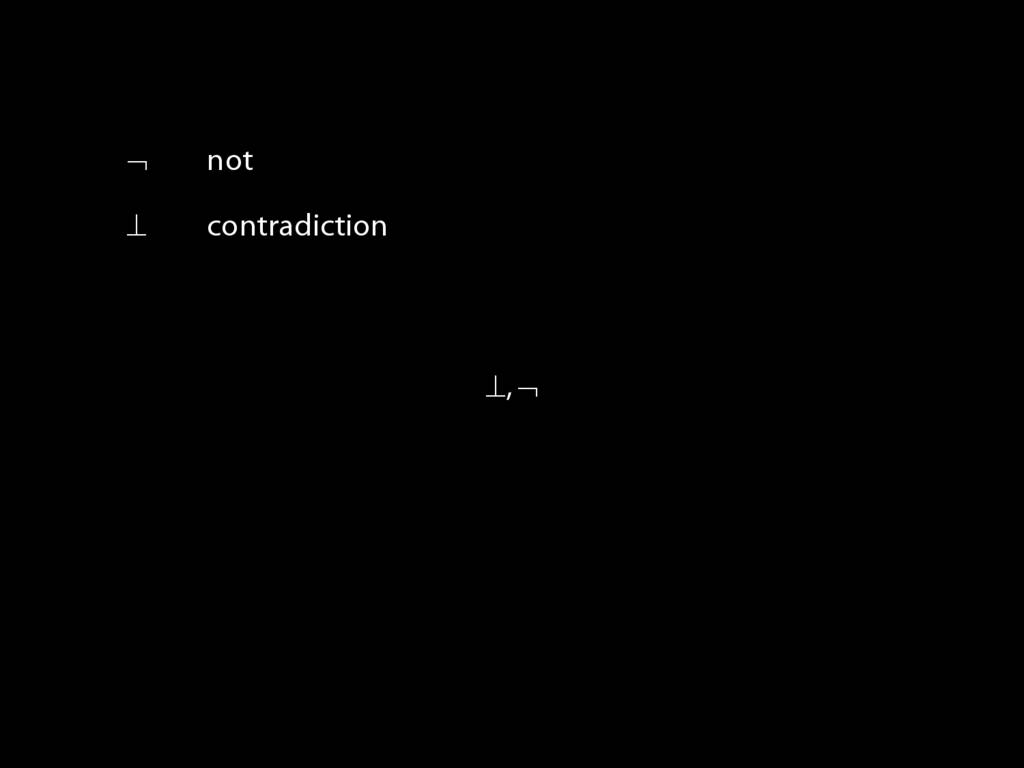
For each of these signs, we want two things: it's truth table and the rules of proof that allow us to exploit it in Fitch proofs.
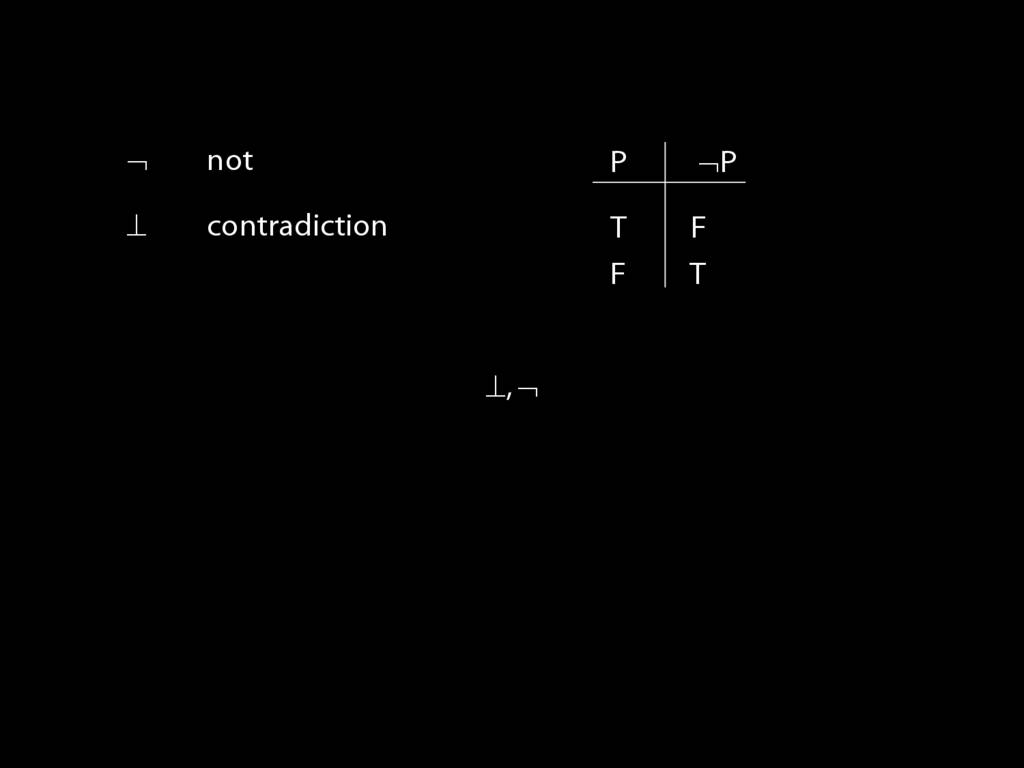
Here's the truth table for negation: it takes true to false and false to true.
This is a sulky attitude to have, but not quite as sulky as the contradiction sign ...
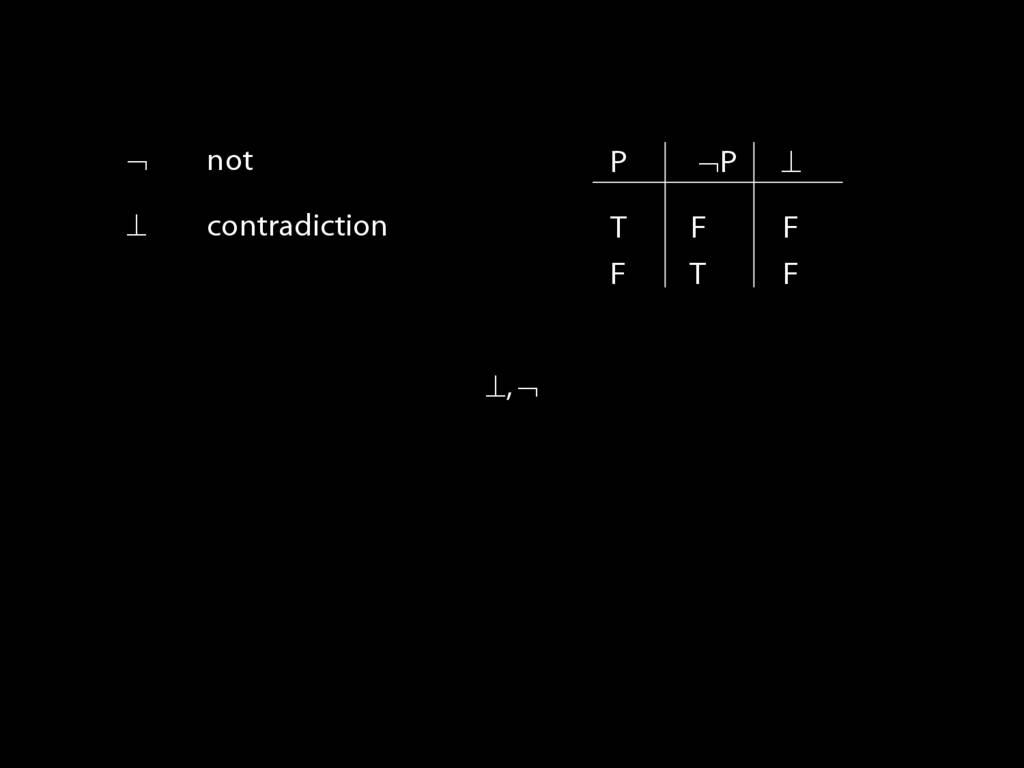
... which just takes everything to false.
(How great is that?)
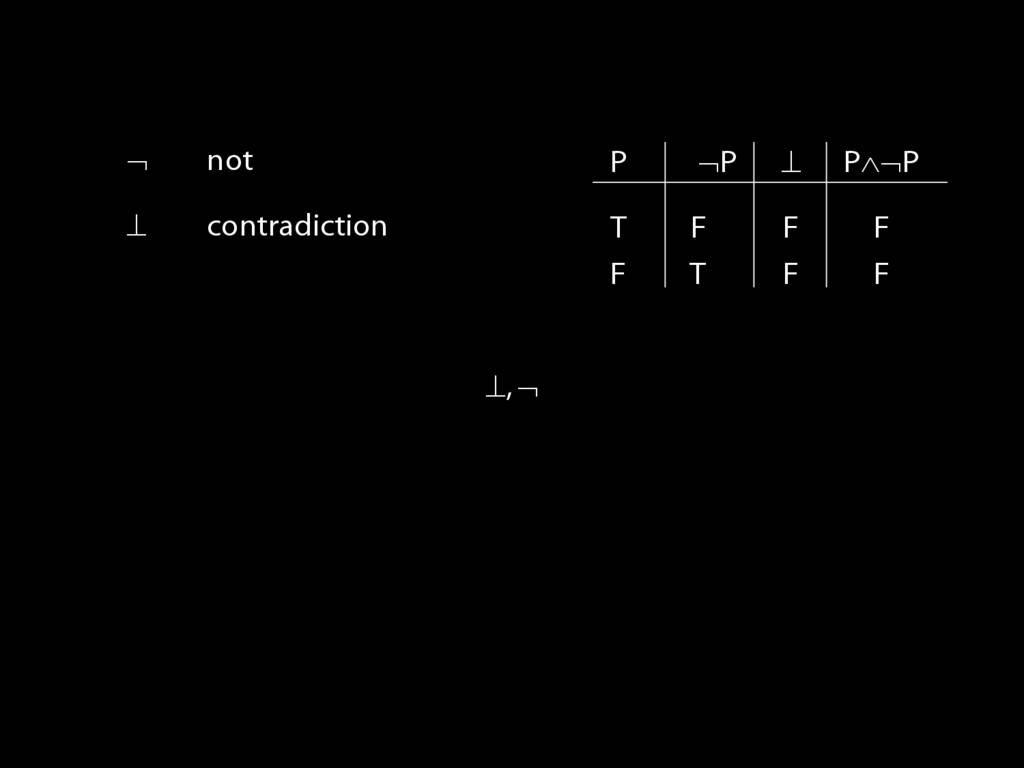
Strictly speaking we don't need the contradiction sign because it has the same truth table as P and not P.
(Well, strictly speaking, we only need one connective, but that is another story.)

Let's do contradiction first.
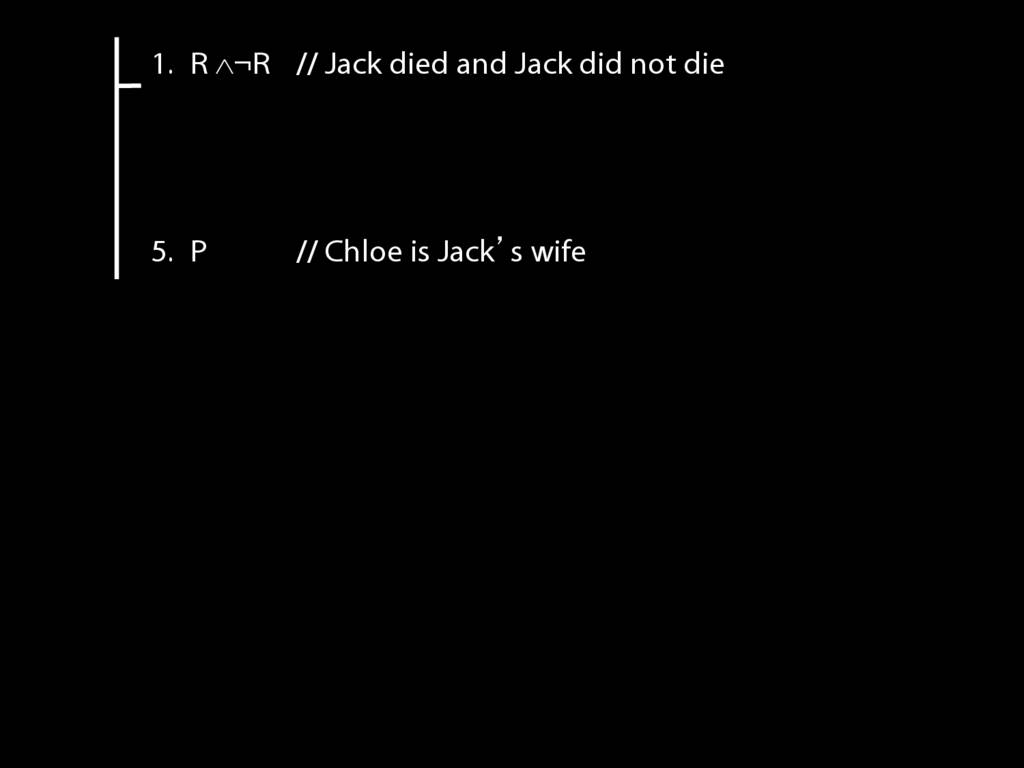
Here is an argument exemplifying the use of the contradiction rules.
We're going to prove it using Fitch, but first, is it valid?
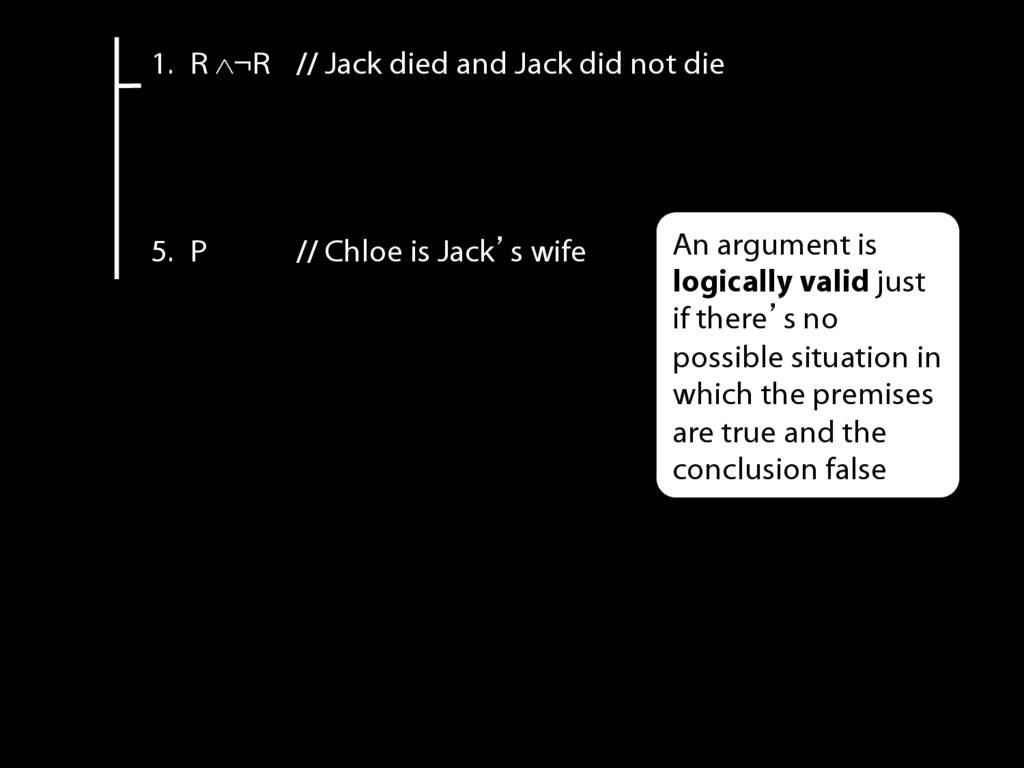
Recall the definition of logical validity.
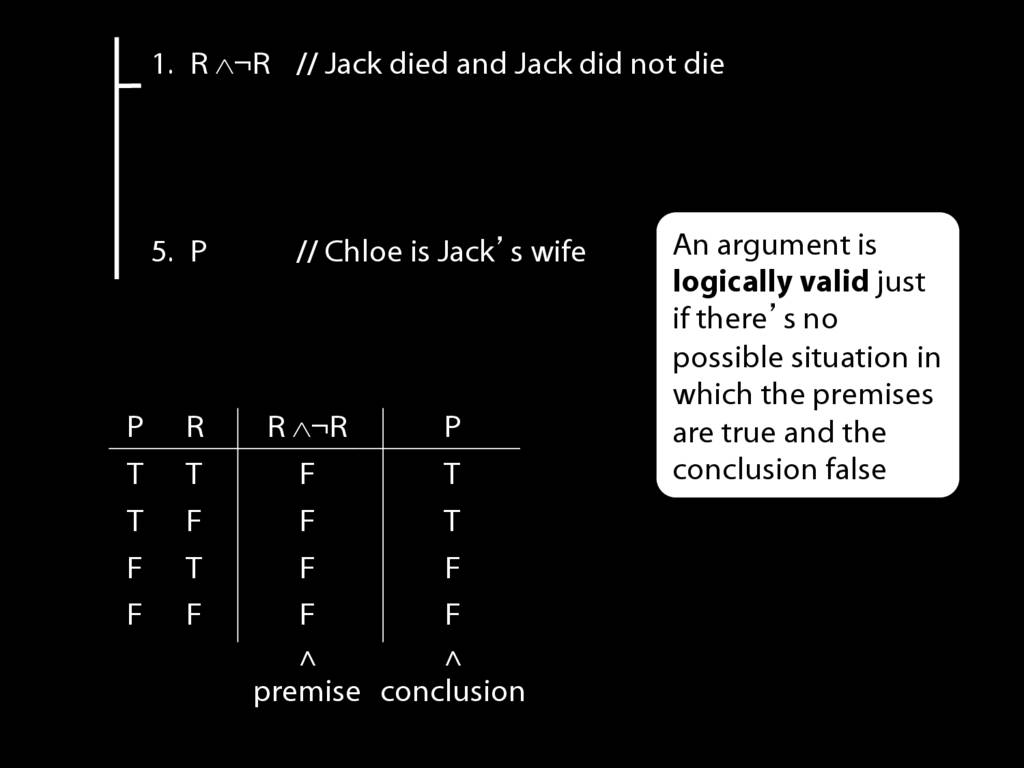
Now looks at the truth-tables for premise and conclusion.
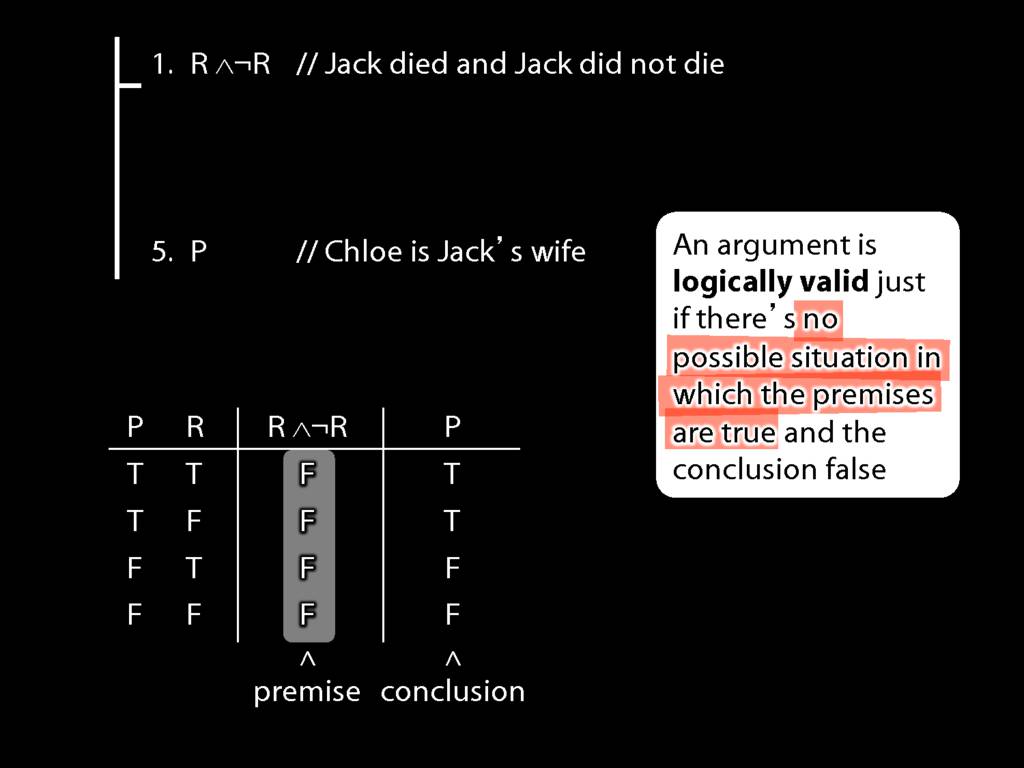
You can see that there's no possible situation in which the premise is true.
So, surely, there can't be a possible situation in which the premise is true AND the conclusion is false.
So the argument is logically valid.
Now let's prove it.

What shall we do first? The premise is a conjunction, so we can apply conjunction elimination.

This gets us R ...
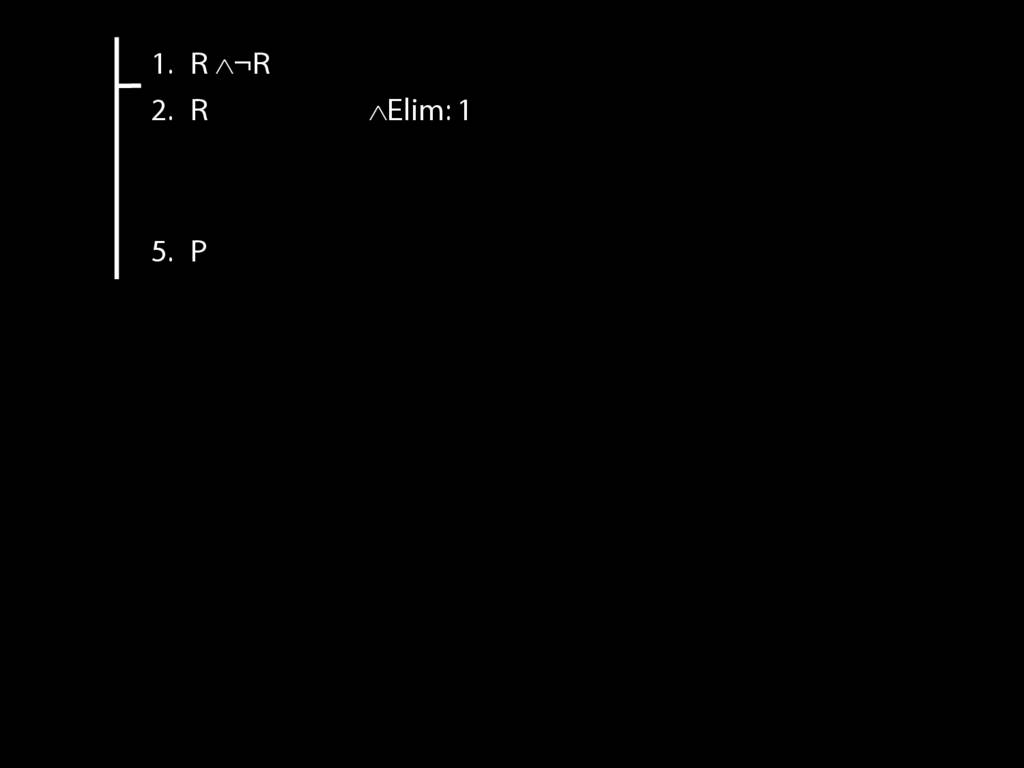
... and we musn't forget to cite the rule and the line number.
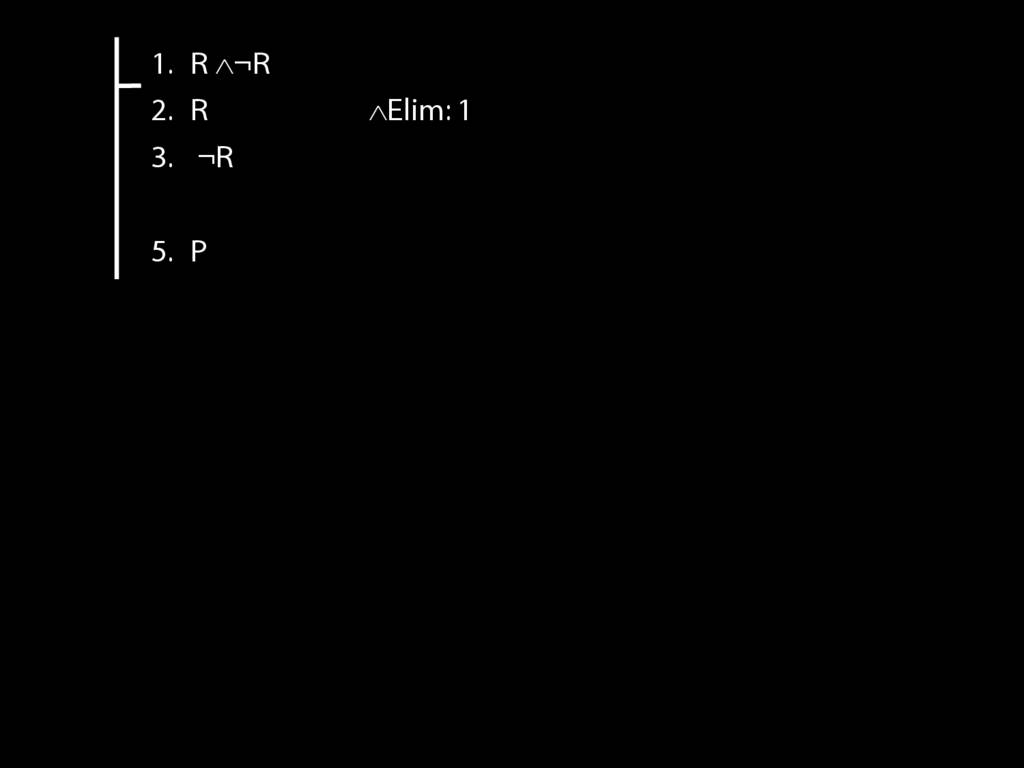
We can also extact not R from the premise ....
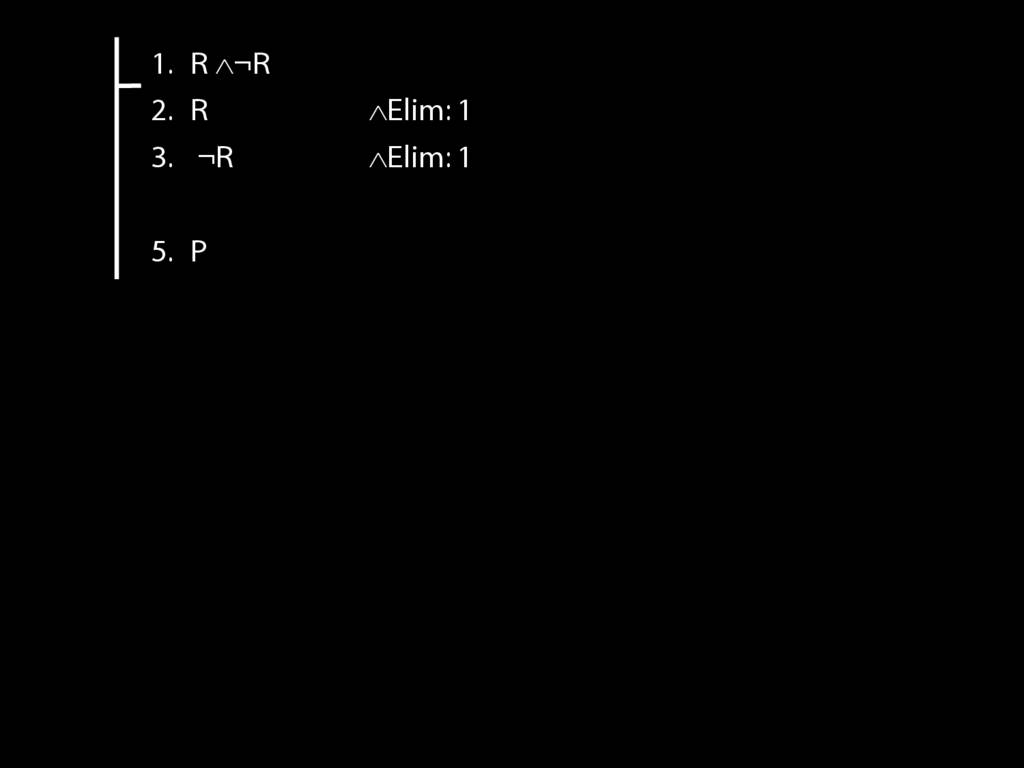
... using the same rule, conjunction elim.
But now what happens?
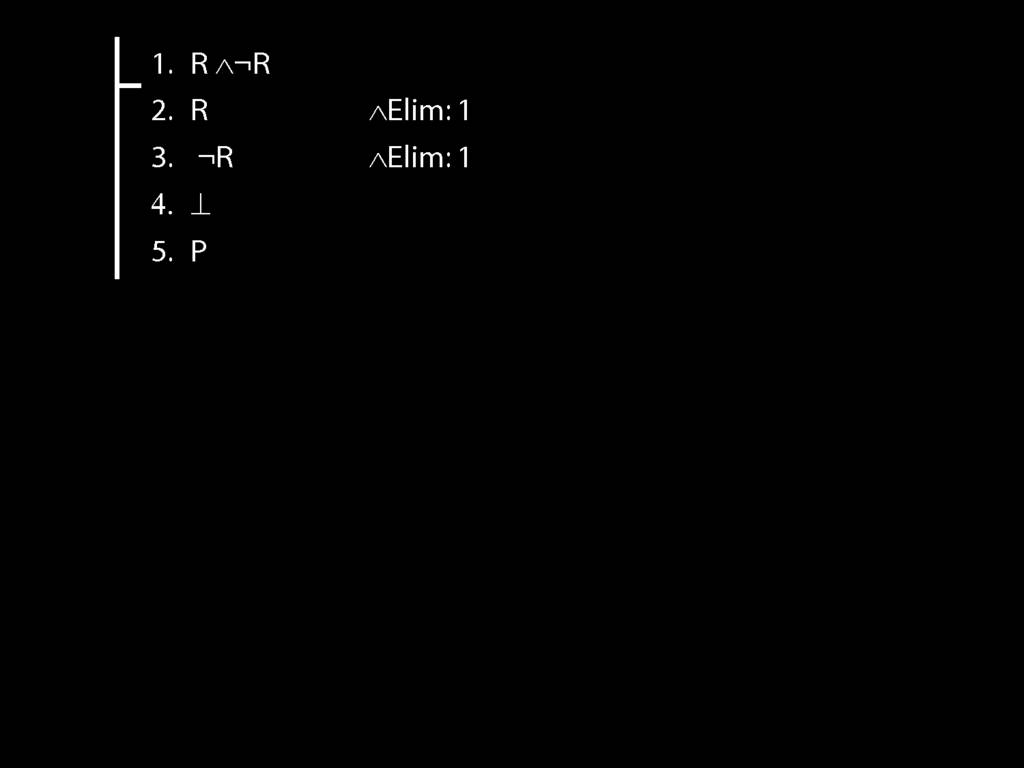
We can introduce a contradiction. Why? What allow us to do this?
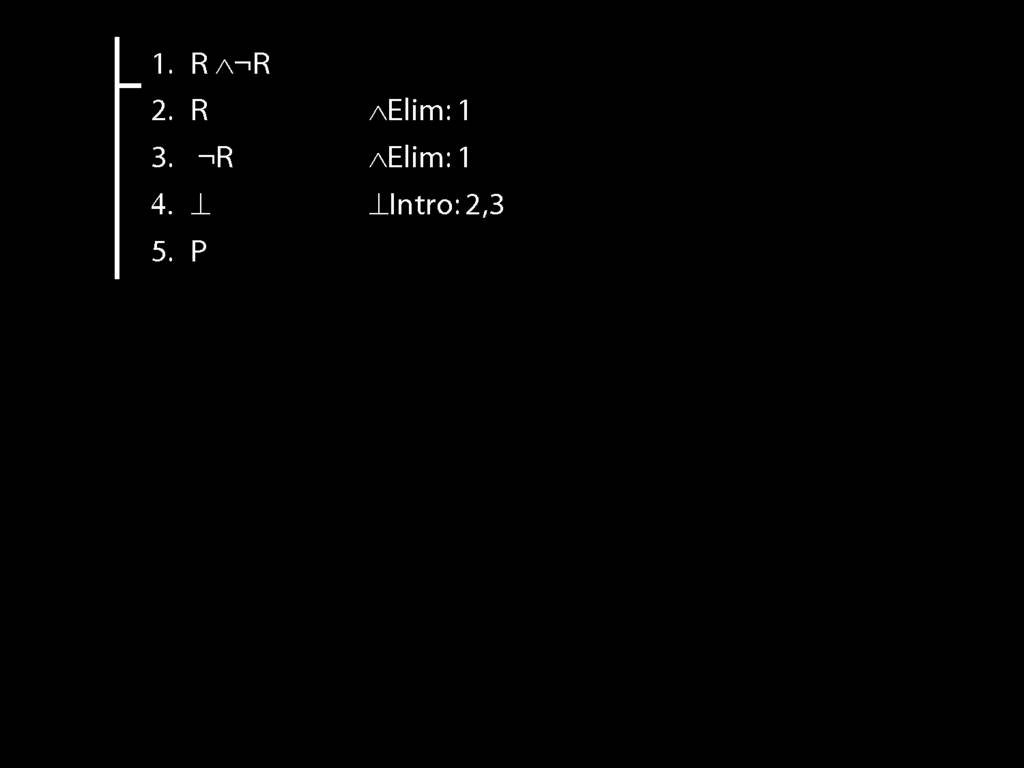
Look at the justification given. This tells us that the rule is contradiction intro ...
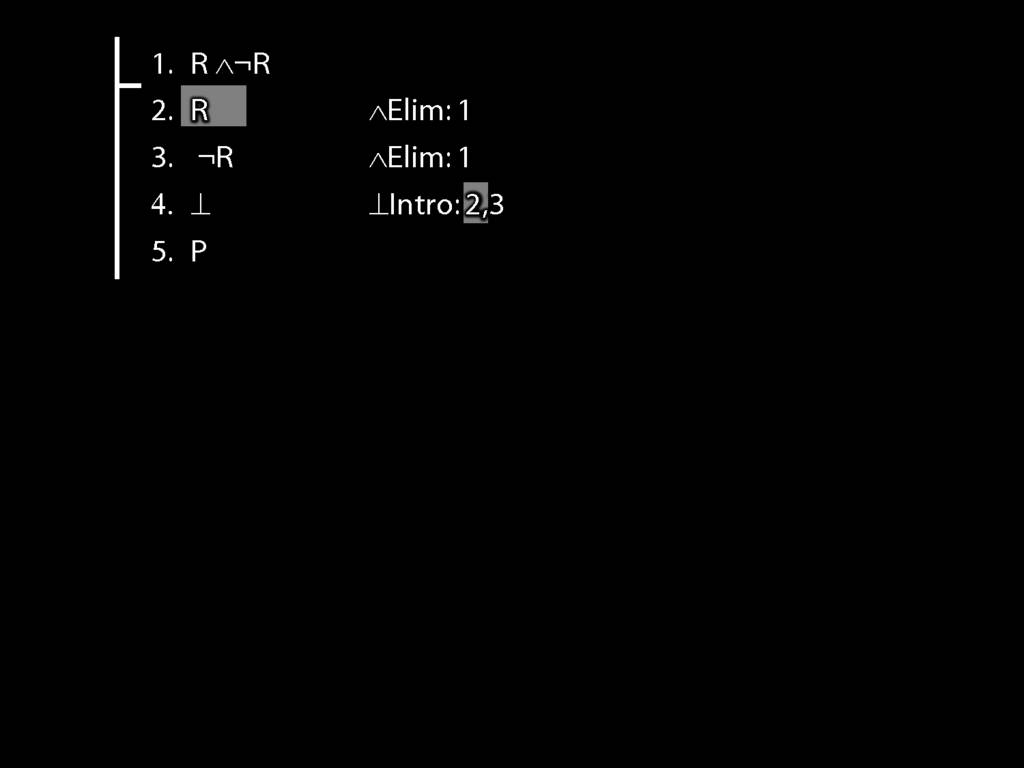
... and it tells us that the lines are 2 ...
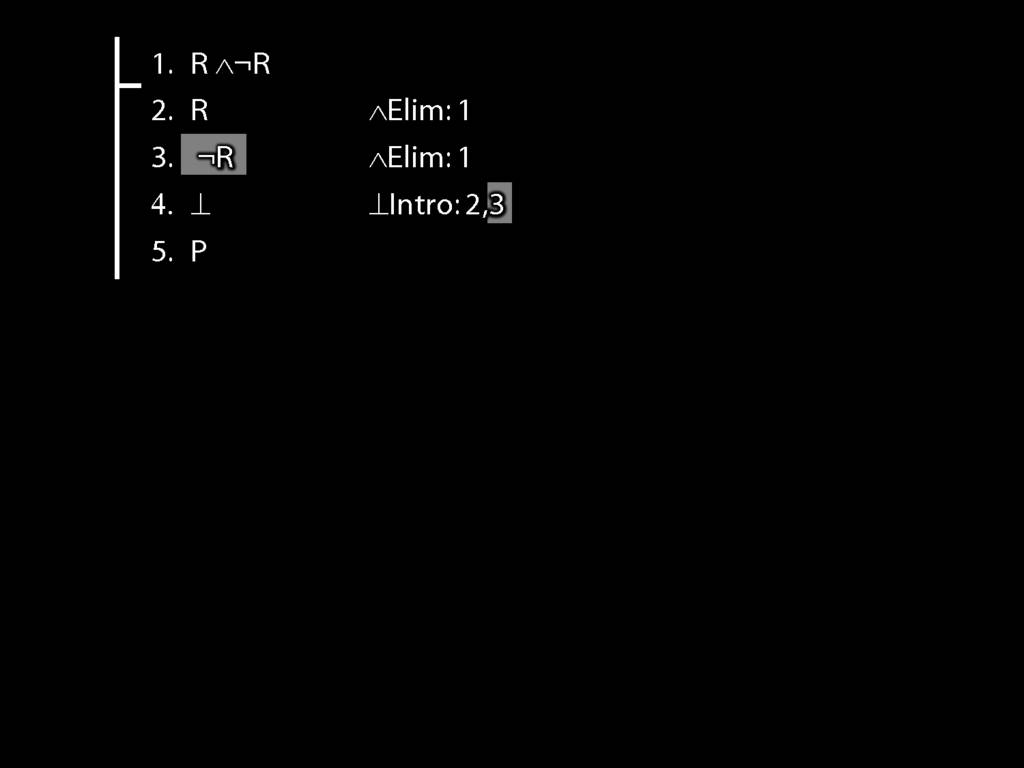
... and 3.
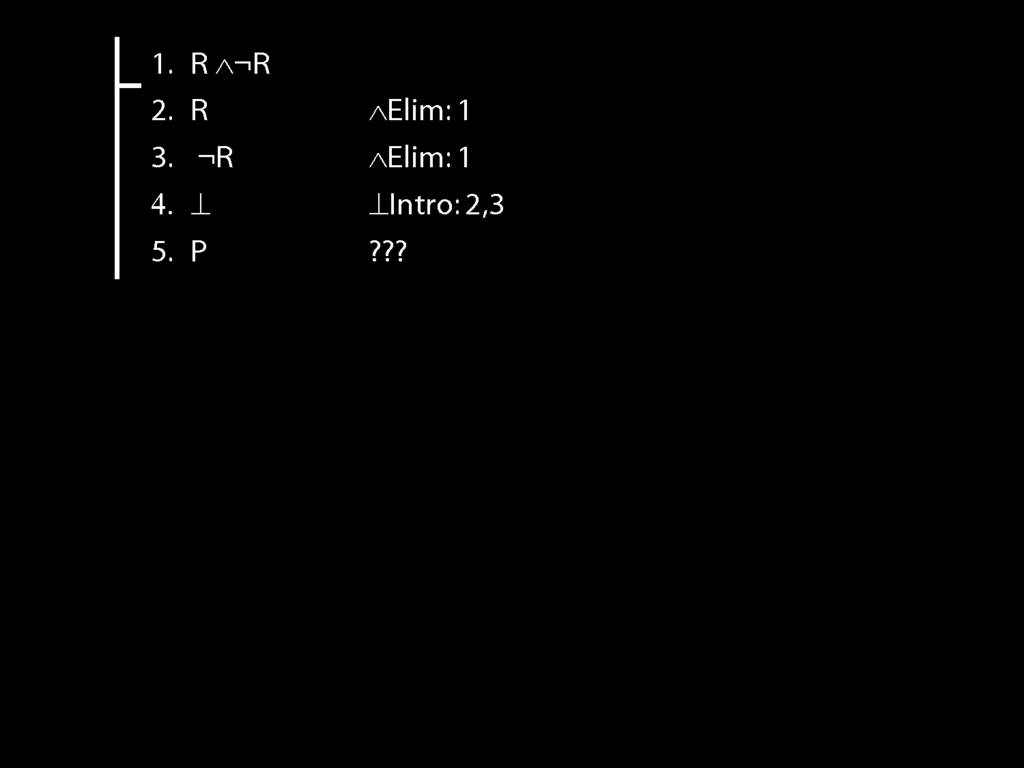
Now how do we get to the conclusion?

Conjunction elimination is made for this purpose.
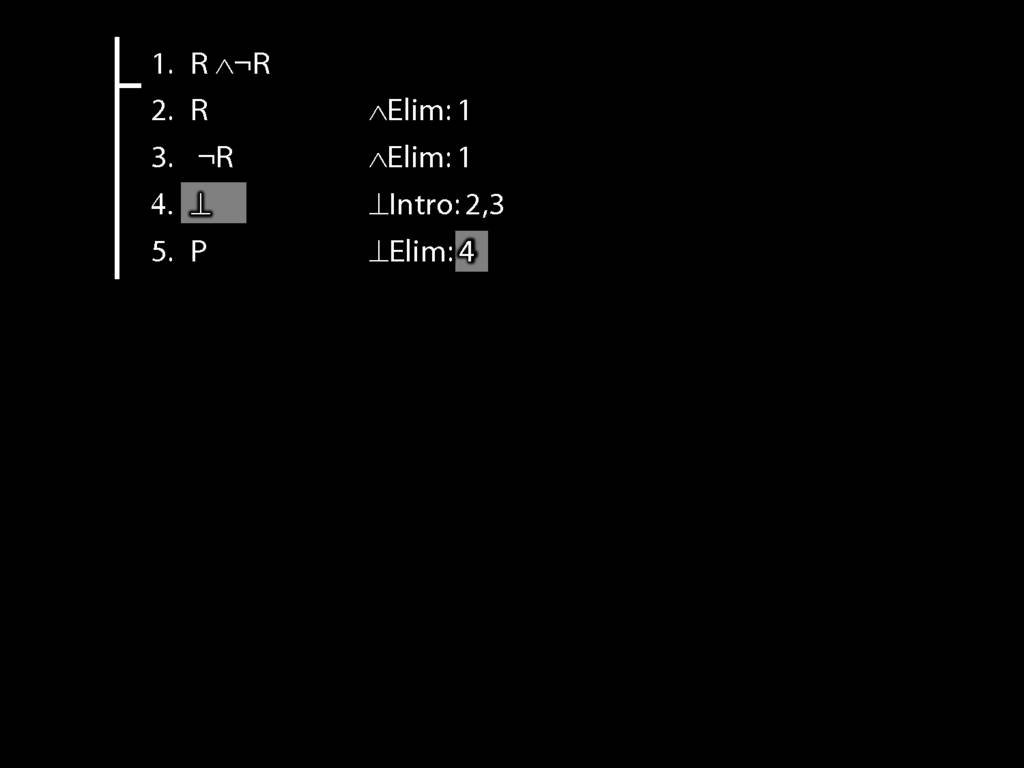
To eliminate the conjuction, we need to cite the line in which it occurs.
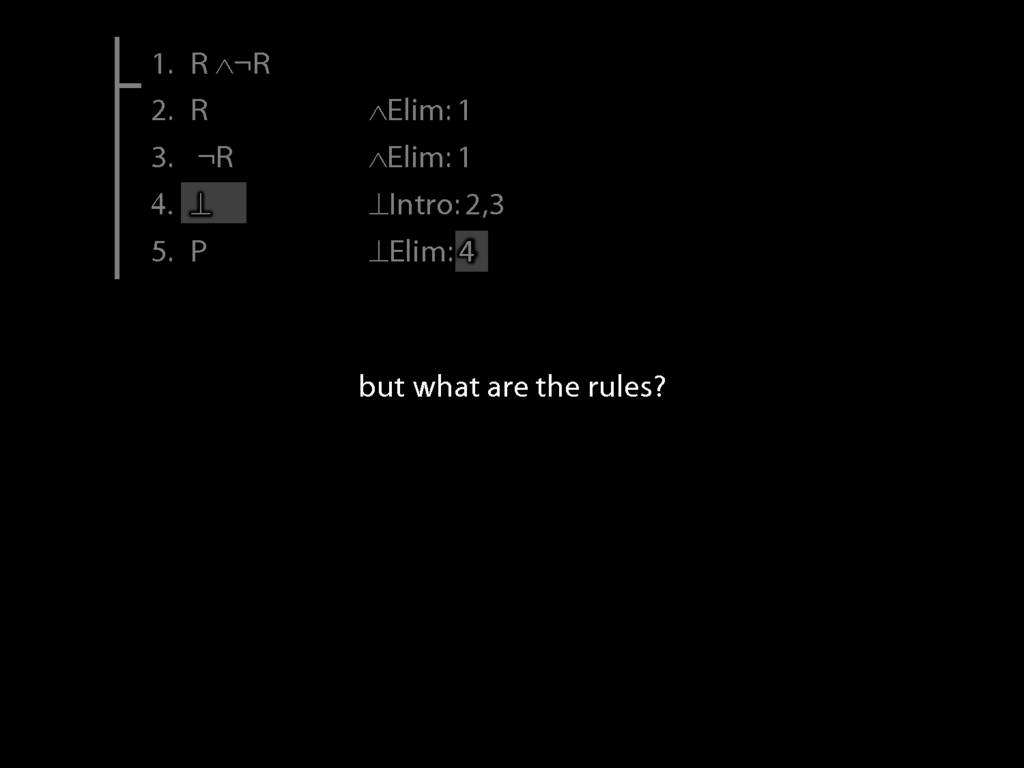
That's good, we've seen the rules contradiction intro and contradiction elim in action. But so far I've not told you what the rules are.
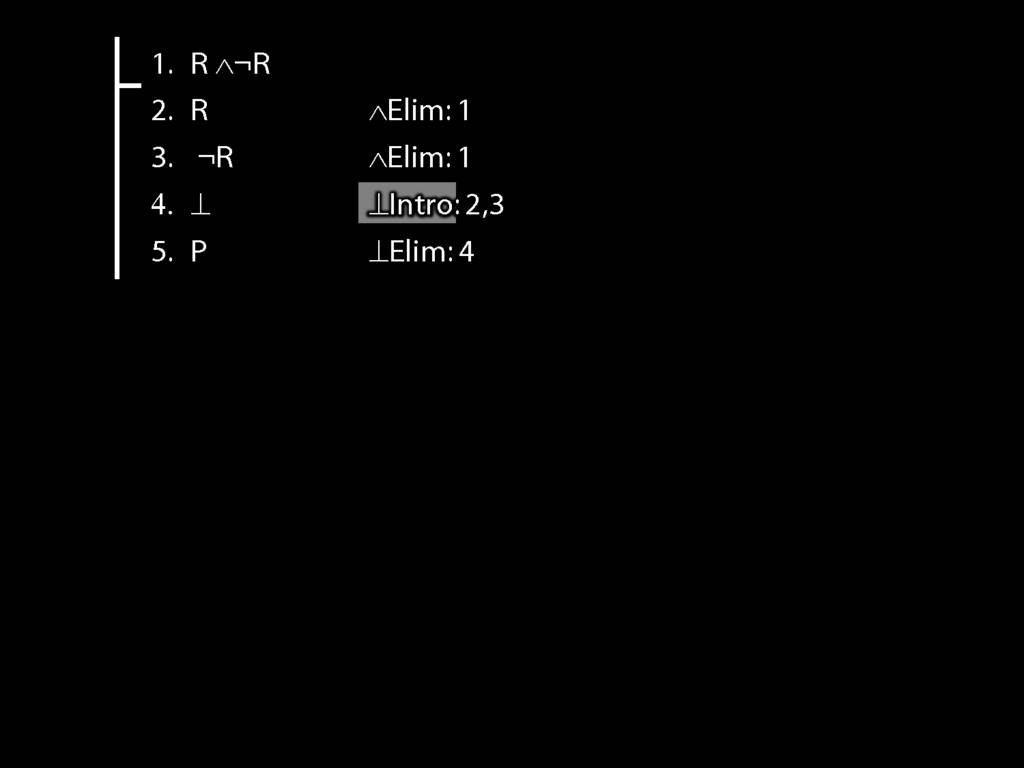
Here's where we used contradiction intro.
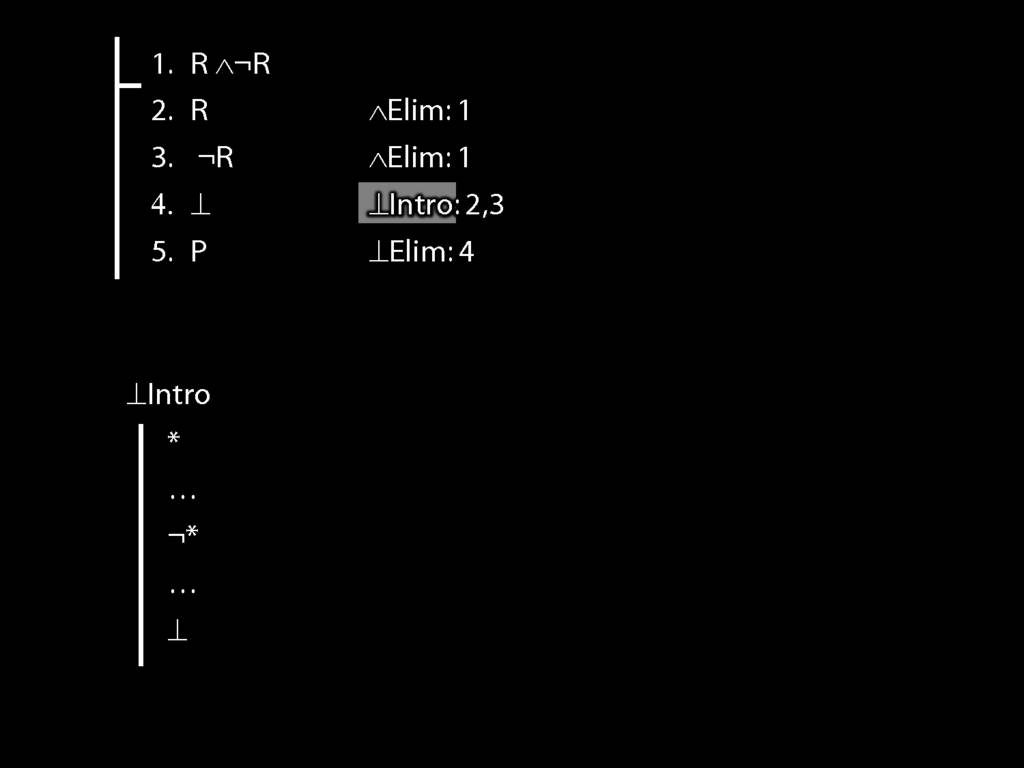
The rule says this ...
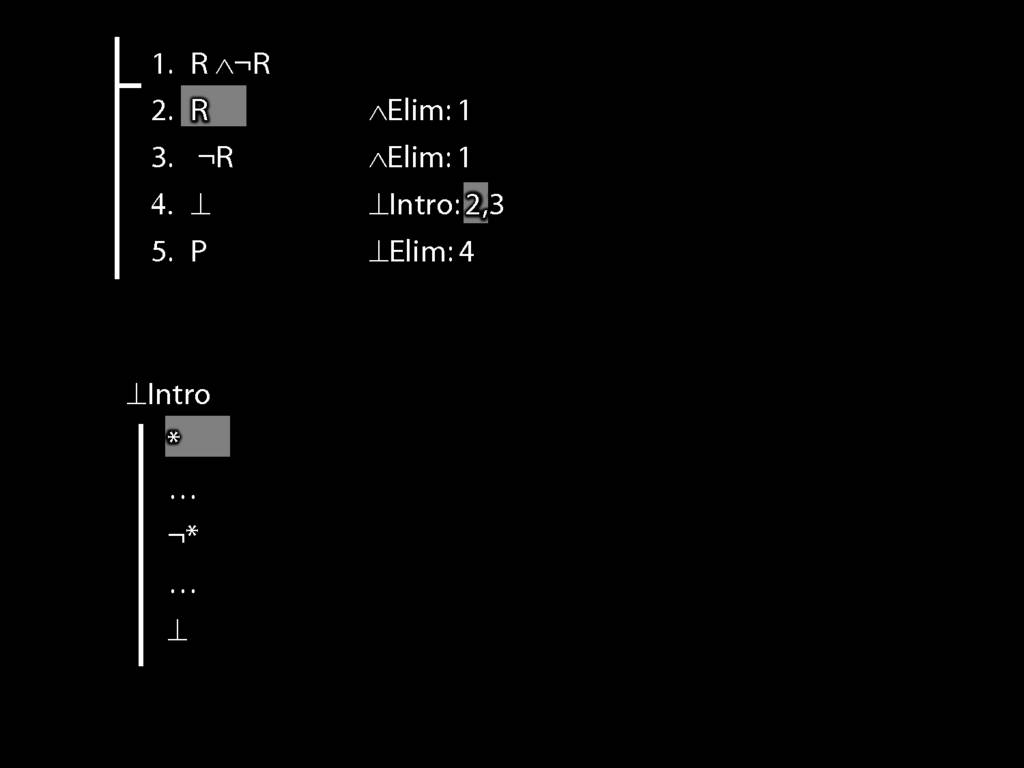
... that if you have a sentence ...

... and also the negation of that same sentence, then ...
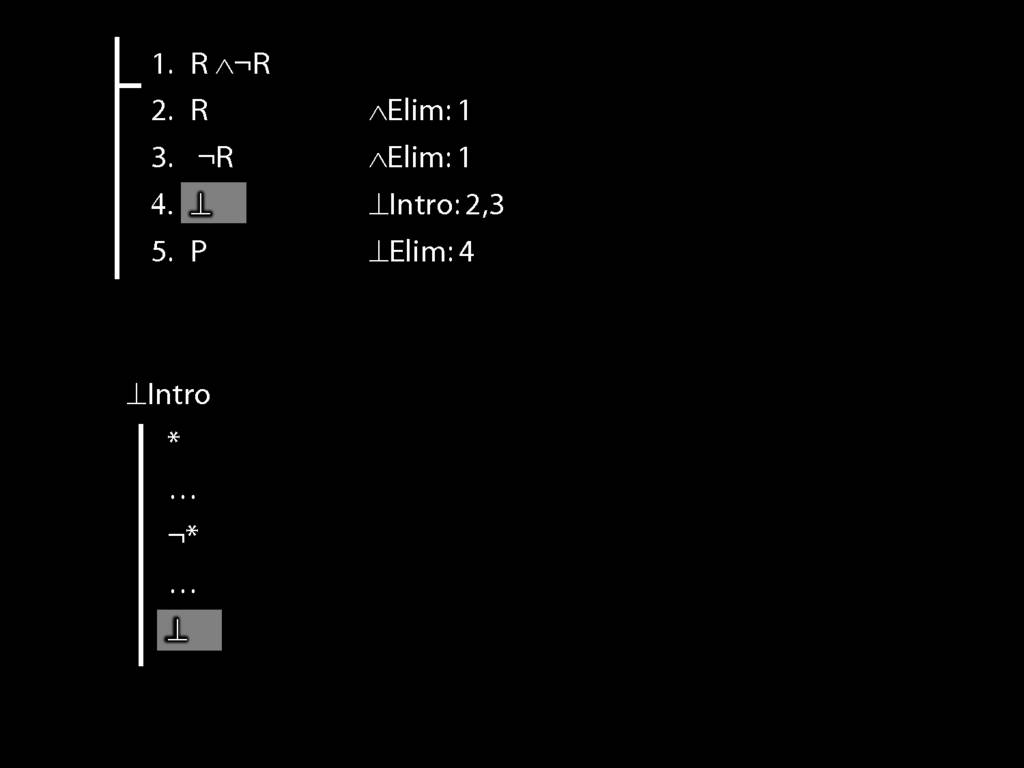
... you can add the contradiction sign in a new line of your proof.
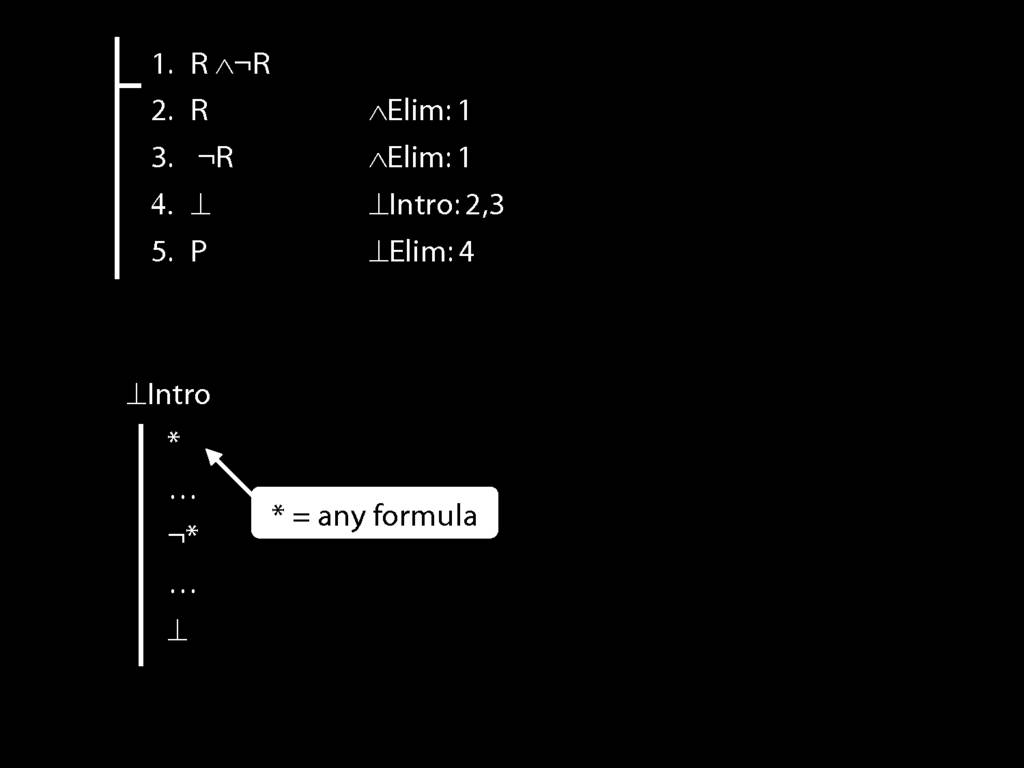
(This works for any sentence, not just sentence letters.)

What about the elim rule, contradiction elim?
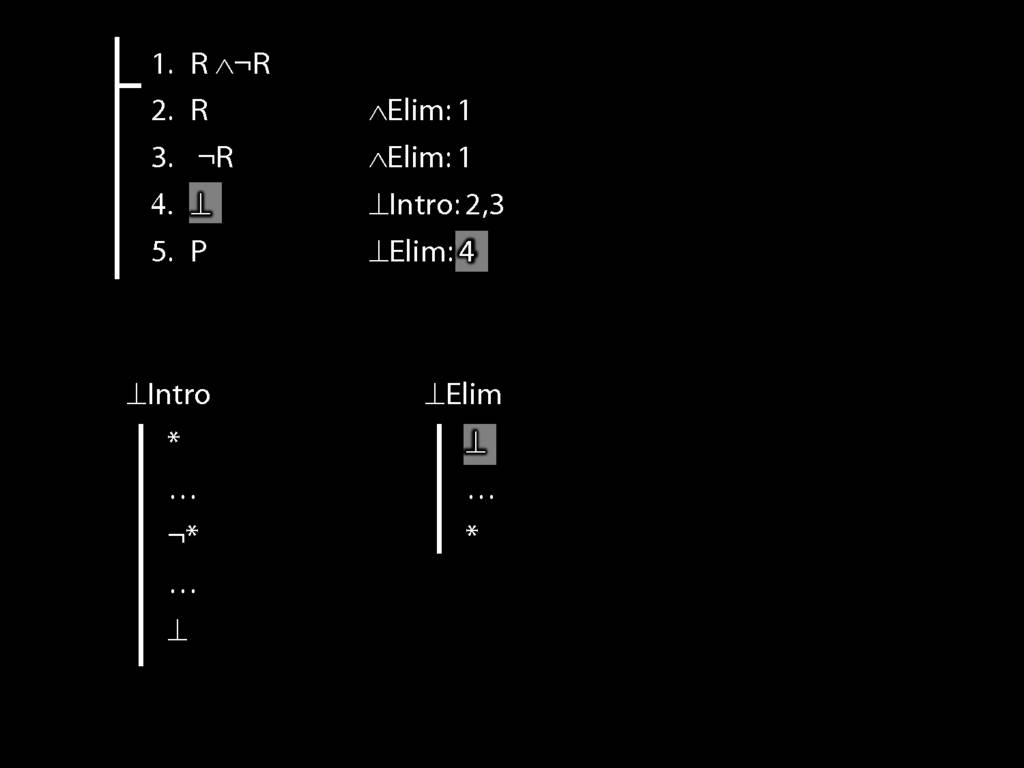
Here's how to use it: you need to have a contradiction in your proof somewhere, ...
... and you cite the contradiction ...
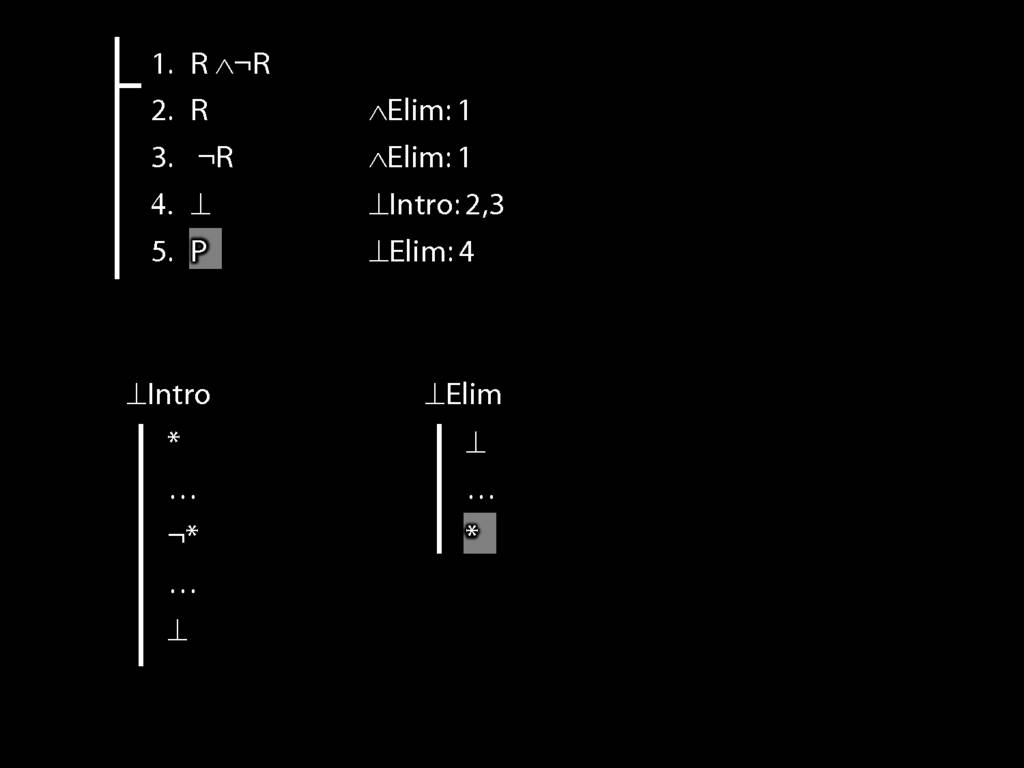
... and you can add whatever you want to your proof.
Contradiction elim is a wonderful rule but it comes with a word of caution.
It's quite rare that you will use contradiction elim.
Most of the time, when you have a contradiction in your proof, the rule you actually want is negation introdction.
So be careful when you feel the urge to eliminate a contardiction: always ask yourself whether you shouldn't be introducing negation yet.
(We'll see how to introduce negation later.)
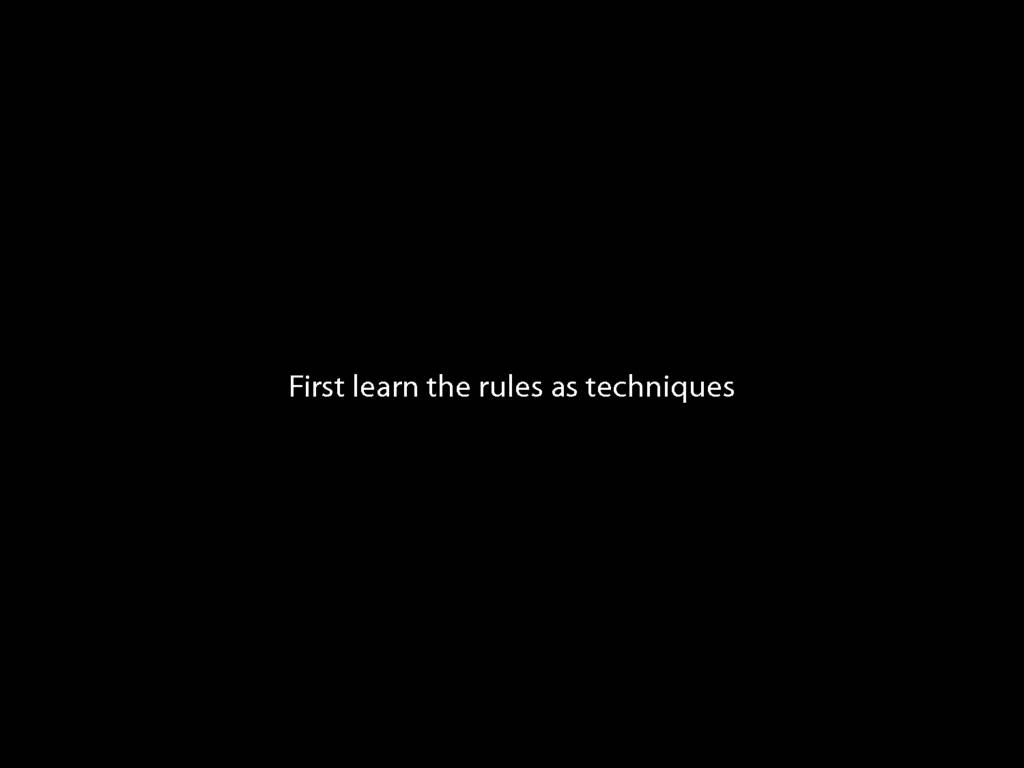
I haven't explain anything about why the rules should work as they do.
My suggestion is that you first learn the rules without thinking about their meaning,
and later we'll discuss how the rules relate to logical validity.
(This is a bit different from the textbook which wants you to think about why the rules are good before you use them.)